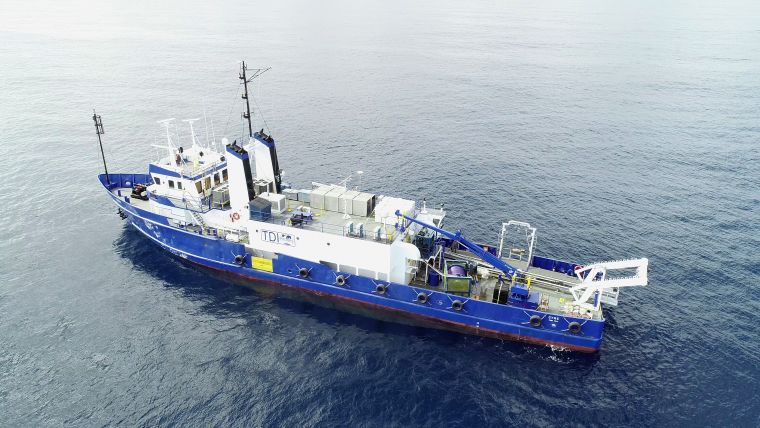TDI-Brooks has concluded a comprehensive multi-client multibeam and seabed piston coring program in Suriname for GeoPartners, acting on behalf of Staatsolie Maatschappij Suriname. The project involved seep data acquisition, processing, interpretation, and data management over a survey area of 45,000 square kilometers, utilizing TDI-Brooks’ vessel RV Gyre.
The project, executed in two phases, included geophysical and geochemical components. The geophysical leg, conducted from July to October, encompassed multibeam echosounder (MBES) surveys, backscatter, and plume detection over 45,019.7 square kilometers. From October to November, the geochemical phase involved MBES, backscatter, plume detection, and subbottom profiling, complemented by the collection of 60 SGE cores and 7 heat flow samples. Each core site featured a 1-kilometer chirp subbottom profiler line.
Suriname’s first standalone gas project a possibility with promising finds at Block 52 | OilNOW
The program yielded “several potential hydrocarbon discoveries”, with visually striking core samples recovered, according to TDI-Brooks. Ben Sayers, Partner at GeoPartners, remarked, “Another successful acquisition completed. Thank you to all crew and support staff involved.” Ron Daniel, Geoscience Advisor at Staatsolie, added, “Thank you for a safely and well-executed project, done in collaboration with all the stakeholders. We look forward to the geochemical results.”
TDI-Brooks said the RV Gyre, equipped with cutting-edge technology, played a pivotal role. Its equipment included a Kongsberg EM-304 multibeam echosounder, an Edgetech HM3300 chirp subbottom profiler, and capabilities for geotechnical and geochemical sampling. The collected samples will undergo detailed analysis at TDI-Brooks’ laboratories in College Station, Texas, to identify hydrocarbons and assess their characteristics.
TotalEnergies to begin development drilling in 2026 for Suriname’s first deepwater project | OilNOW
Bernie Bernard, Vice President and CTO of TDI-Brooks, highlighted the value of seep hunting: “Seep hunting surveys are based on the observation that migrated petroleum from deep source rocks can be detected as thermogenic seepage in near-surface sediments. Advances in tools and techniques have greatly enhanced our ability to evaluate petroleum systems, determine charge, age, maturity, and even oil quality.”
Energy data analytics provider Wood Mackenzie said Suriname and itd neighbor Guyana can supply up to 12 million metric tonnes per annum (MMTPA) of liquefied natural gas (LNG) by the next decade. This output would account for approximately 11% of the anticipated 105 MMTPA global LNG supply-demand gap by 2035, which Wood Mackenzie projects as the volume still needed from projects that have not yet reached a final investment decision (FID). This potential LNG supply would come from Guyana’s Haimara cluster and Suriname’s Block 52 (Sloanea), which Wood Mackenzie estimates collectively hold 13 trillion cubic feet of non-associated gas.



